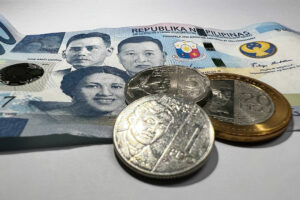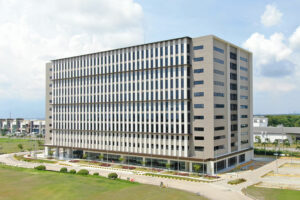Digital transformation in Philippine agribusiness: The scarcity and glut of tomatoes

(Part 6)
A major part of Industrialization 4.0 is Data Analytics and Data Science. JT Solis, CEO of Mayani, went straight to the point at the Forum on Digital Transformation by referring to the huge data deficit that exists in the Philippine agribusiness sector. He rightly pointed out that what we have to build up is not just the physical infrastructure that underpins our physical supply chain operations (first mile line haul, last mile delivery, reefer trucks, cold storage facilities, etc.) but the information structure that is needed to correct the asymmetry of information, especially biased against the small farmers.
To dramatize the point, Mr. Solis suggested that the participants of the Forum check what appeared on Facebook and other news websites that very day. The news reported that 91 hectares in Bungabon, Nueva Ecija were devoted to planting tomatoes. Consequently, there was an oversupply situation leading to a precipitous drop in prices. Just last January, the Bangko Sentral ng Pilipinas (BSP) reported that of the 2.9% rise in average prices reflected by the Consumer Price Index, 0.4% could be attributed to the increase in tomato prices. In fact, the top five contributors to inflation were mostly in the agricultural sector. Tomato was the top one, with meat and poultry as top four and five, respectively.
Because of this obvious lack of information to guide the production decisions of farmers, Mayani decided to do the following, Mr. Solis said:
1.) “We initially built Mayani as an agri e-commerce platform to be able to provide the average Filipino with access to nutritious, fairly priced produce. We have tried to accomplish this goal by working with a good number of B2B offtake partners, such as Jollibee Food Group, Shakey’s, etc. as well as NGOs. What we realized was that we can leverage the power of offtake and do a great deal of development interventions upstream the supply chain. We, however, have been sufficiently realistic to realize that providing market linkage to these smallholders is not sufficient to make a significant dent in their lives. We could do more to actually provide and unlock other interventions, such as access to inputs for the production process.”
2.) “We took cognizance of the fact that half of the cost of production goes towards inputs, in fact oftentimes more than half. At the same time, it would be more profitable for the farmer if they have access to less costly credit. This motivated us to strike a partnership with GCash. What stared us in the face is that there is a $6 billion agricultural credit gap in the Philippines.
“There is an agri-agra law that exists in the Philippines. Despite this, the large financial institutions prefer to pay hundreds of millions of pesos in penalties for not investing in agriculture because they do not see how they can generate profits from agri-agra loans.
“We were fortunate to see the light: that we could leverage our information infrastructure, the data that we have within our supply chain to be able to holistically underwrite loans for these small farmers, and at the same time leverage offtake. ‘Someone’s gonna buy their harvest anyway, right? And that is a sure source of repayment!’”
3.) Mr. Solis expressed satisfaction that Mayani partnered with GCash in providing credit to the small farmers. Mayani’s vision is to create the largest agri-credit movement to do what the big banks have failed to accomplish. “No assets, no credit card, no collateral!” These small farmers have never stepped into any bank branch in their lifetime. “Thanks to our having the information structure provided by our close contacts with the small farmers, we are able to prevent situations similar to what we have seen in Bongabong, Nueva Ecija today — an oversupply of tomatoes. At the same time, we are able to drive rural financial inclusion.”
The intervention of Irish Ativo from the Department of Agriculture moved the discussion towards the efforts of the present Secretary of Agriculture, Francis Tiu Laurel, to introduce the Science and Info-driven Market Decision Making in the work of the department.
This is a perfect example of the digitalization of the entire Department of Agriculture. As a first step, the Agribusiness and Marketing Assistance Service (AMAS) division of the Department is launching its Agricultural and Fishery Market Information Systems whose objective is to develop a data base for suppliers and buyers, as well as to facilitate market linkage on a digitalized level. Dr. Maningas then pointed out that it is crucial for the Department of Agriculture to coordinate with the Department of Information and Communications Technology since the latter is the one charged with providing the backbone for the information network. This close coordination was confirmed by the representatives of the two government agencies.
Given the appropriate leadership and intervention coming from the government agencies concerned, civil society can play an equally important role in bringing digitalization to the small farmers. A good example is the role played by the social enterprise AgrodigitalPh represented in the forum by Henry James Sison who emphasized that his organization works exclusively with small holders.
To quote him: “It is but natural that we get in touch with local government units. There are a lot of interventions in the countryside. But there is an absence of business plans among these enterprises. As an example, we work a lot in Panay, Negros, and Cebu. In these provinces, there are numerous landing sites that are built at random, with little consideration on how they are going to be optimally used. Large sums are invested in these landing sites but there is a serious shortage of business plans on how these sites are going to be profitably utilized. That’s where we come in. We try to foster a business mentality among the progressive small holders. We try to distinguish between the enlightened smallholders and those who are hopelessly entrenched in the old system in which the only concern is to bring their stuff to the bagsakan (trading post) or the bulungan in the case of the small fishermen.
As a final word, as Marc Concio concluded, the biggest challenge is to change the farmer’s mindset. It is easy to talk about digitalization, using advanced technology, but at the end of the day, if the farmer does not appreciate it enough to adopt it, there will be zero impact.
To illustrate, Mr. Concio said that they have spoken to many farmers and asked them if they want to have access to cheaper credit, say at 4% yearly interest, to the tune of P100,000 to P500,000 per hectare. It’s usually a YES. Then they ask what do they have to do? They are told to enroll online into our platform, into our farmer credit scoring system. This openness is already a step towards changing their behavior. Changing behavior is easier said than done, though.
As Mr. Concio affirmed, all that they tell the small farmers is that it is not necessary that they change their behavior. All that they tell them is that when they enter the trading post, it passes through the AI CCTVs and truck weighing scales. Based on the weight of their truck, the CCTVs and the person at the entrance capture what kind of fruit or vegetable is being brought in, say five tons of carrots. The price at the trading post is determined by supply and demand. There appears a theoretical price which then determines the gross income of the farmer supplier. This proof of income is shared with the LANDBANK, the creditor. Third, the farmer is matched with the buyer at the trading post. The buyer is guaranteed whatever price comes out in the trading post. By having this bidding system, there is no need to change the behavior of the farmer. Once he perceives the improvement in his income through this system, he will adopt technology and digitization.
As the colloquial expression attests, the “proof of the pudding is in the eating.”
Bernardo M. Villegas has a Ph.D. in Economics from Harvard, is professor emeritus at the University of Asia and the Pacific, and a visiting professor at the IESE Business School in Barcelona, Spain. He was a member of the 1986 Constitutional Commission.




